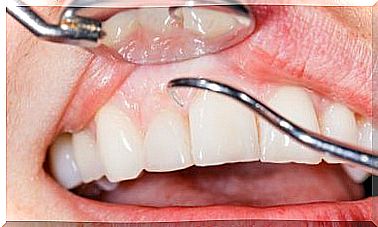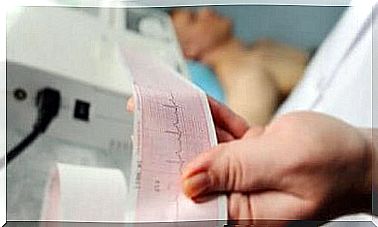Signs Of Lactose Intolerance That You Do Not Know Yet
Lactose intolerance is not a serious health problem, but certain symptoms can affect the quality of life.

Food intolerances have been around for as long as people have eaten milk, grains, and legumes, and it’s not a new fad. Today we are talking about the signs of lactose intolerance.
These indicate whether you can digest milk correctly or not. However, if you notice any signs of lactose intolerance , don’t worry. There are now great alternatives that you can fall back on.
What is lactose intolerance?

People with lactose intolerance suffer from symptoms after consuming milk or dairy products because they lack the enzyme that is necessary for the digestion of lactose (milk sugar).
This causes the milk to ferment and lead to flatulence. Abdominal pain, diarrhea or headaches, dizziness and chronic fatigue can also be the result.
However, when a person with lactose intolerance eats milk, yogurt or ice cream, there is no serious or irreversible damage to the intestinal tract, the symptoms are only temporary.
Many believe they have seen signs of lactose intolerance, but the actual symptoms are often the result of excessive bacterial growth, celiac disease, or bowel inflammation.
Gene mutations have made it possible for humans to drink milk even in adulthood. However, some people do not produce enough enzymes to absorb the lactose and this leads to discomfort.
Most patients suffer from primary lactose intolerance. This means that you can have a cup of milk (or a dairy product) without experiencing symptoms immediately.
You can choose low-lactose dairy products or take lactase to avoid discomfort.
Symptoms of lactose intolerance

The symptoms usually appear about half an hour to 2 hours after consuming foods containing lactose.
The intensity is different for each person and also depends on the amount of lactose that was consumed.
In addition, of course, how much lactase is produced by the organism also plays a role, i.e. how great the lactase deficiency is, if this enzyme is present at all.
The symptoms that arise are not always clear. It can also be ailments that are confused with other health problems, such as gastroenteritis.
It is therefore important to observe the exact point in time at which the symptoms appear. If symptoms only become noticeable after consuming milk, yogurt, cheese or other dairy products, this could be a sign of lactose intolerance.
- The fermentation of the lactose with the help of the intestinal bacteria creates a sour-smelling bowel movement, which can lead to irritation and burning sensation when the bowel is emptied.
- This can also lead to a bloated stomach, gas formation and abdominal pain, which can persist for several hours after consuming the dairy products.
- Most likely, gas and stool have a very strong, unpleasant odor.
Diarrhea or constipation can also be due to lactose intolerance, as it leads to an unbalanced intestinal flora.
In addition, cramps and gastric colic are common signs of milk intolerance.
Children or adolescents with lactose intolerance often also suffer from nausea and nausea.
In the case of chronic, secondary lactose intolerance, the following symptoms can also occur:
- significant weight loss
- perianal redness
- Stomach cramps
- explosive defecation
In addition, patients often suffer from skin problems, extreme fatigue and pain in the extremities.
How is lactose intolerance diagnosed?

If you think you have lactose intolerance, you should see a specialist who can examine you for it. He will perform various analyzes and tests for a diagnosis.
The most common examinations are:
Measurement of the glycemic index
- First, a blood sample is taken to analyze the initial glycemic value.
- After that, the patient is given 50 g of lactose (4 times) every 30 minutes for 2 hours.
- Another blood sample can be used to determine the amount of glucose in the blood.
If the values are the same, it is because the enzyme lactase is not working normally.
However, this sample is not very specific, since other diseases can also lead to an altered glycemic value, for example diabetes.
Hydrogen breath test

This test is usually carried out to provide precise evidence of lactose intolerance. The hydrogen content in the breath is measured before the patient drinks a lactose solution. After that, the breath is examined every 15 minutes.
When lactose is not digested properly and therefore transported into the intestine, bacteria use it as food and produce hydrogen.
If there is a certain amount of hydrogen in the breath, the likelihood of suffering from lactose intolerance is therefore relatively high.
Small intestine biopsy
If you’ve seen signs of lactose intolerance, an esophageal endoscopy or gastrointestinal endoscopy may help.
The tissue sample can then be examined in the laboratory to determine whether or not lactase is present in the lining.
Acid bowel movements
This test is usually done on young children as the other tests can be uncomfortable or risky.
Genetic test
A genetic test can be used to determine whether the patient has a certain expression of the lactase gene that can lead to intolerance.
A blood or saliva sample from the patient is sufficient to determine the polypmorhisms associated with this disease.








